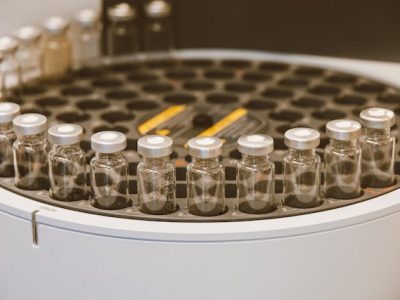
Manufacturing
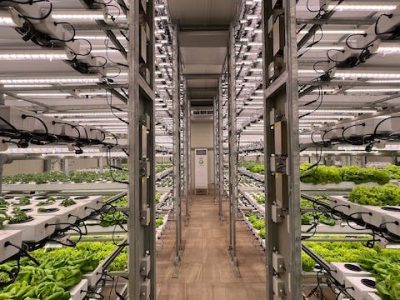
Agriculture & Grain
Dust and fume extraction in agriculture and grain manufacturing play a crucial role in ensuring the health and safety of workers, maintaining product quality and complying with Australian standards. In the agricultural sector, particularly in grain handling and processing, the generation of dust and fumes is inherent to various operations such as harvesting, milling and storage. These airborne particles pose serious health risks to workers that lead to respiratory issues and long-term ailments.
Australian standards, such as those established by Safe Work Australia, emphasize the importance of providing a safe working environment. The Code of Practice for Managing Risks of Plant in the Workplace specifically addresses the need for controlling airborne contaminants in manufacturing settings. Additionally, the Australian Work Health and Safety Act 2011 places a duty on employers to provide a safe workplace, including measures to eliminate or minimize exposure to hazardous substances.
States have several additional requirements such as WorkSafe Victoria guidelines that effective dust and fume extraction systems are recommended to control airborne contaminants in grain processing facilities. Implementing such systems aligns with the broader framework of ensuring occupational health and safety across the Australian agricultural industry. By adhering to these standards, agriculture and grain manufacturers can enhance worker well-being, reduce the risk of respiratory issues and maintain a high level of product quality.
Chemical
Ensuring the safety of workers and maintaining environmental compliance are paramount concerns for chemical manufacturers. The need for dust and fume extraction in this industry is underscored by Australian regulations and standards that prioritize occupational health and safety. According to the Australian Work Health and Safety Act 2011, employers have a legal obligation to provide a safe working environment, including effective measures to control airborne contaminants.
Chemical manufacturing processes often generate hazardous dust and fumes that pose respiratory risks to workers and can lead to long-term health issues. The Australian Safety and Compensation Council’s guidance on airborne contaminants emphasizes the importance of implementing control measures, such as extraction systems, to minimize exposure and protect workers from respiratory diseases.
Adhering to the Australian Standard AS/NZS 1715:2009, which outlines the selection, use and maintenance of respiratory protective equipment, highlights the significance of proactive measures. Dust and fume extraction systems not only align with these standards but also contribute to overall workplace efficiency by preventing equipment corrosion and maintaining a clean production environment.
Micronair helps chemical manufacturers in Australia to prioritize dust and fume extraction to meet legal obligations, safeguard worker health and comply with established safety standards, ultimately fostering a secure and compliant industrial setting.

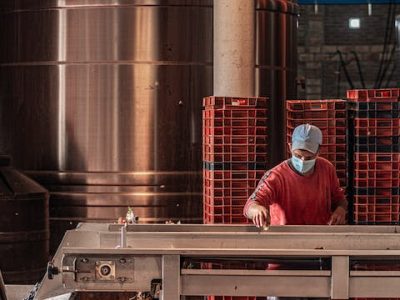
Construction Materials
In the construction industry, the necessity for dust and fume extraction in the manufacturing of construction materials is paramount to safeguard both the environment and the health of workers. According to the Australian Government’s Department of Health and Safety (Safe Work Australia), exposure to construction dust and fumes poses severe health risks, including respiratory diseases and long-term damage to the lungs. The implementation of effective extraction systems aligns with Australia’s commitment to maintaining safe working conditions and mitigating occupational health hazards.
Australian standards, such as those outlined by Standards Australia, emphasize the importance of controlling airborne contaminants in workplaces, especially in industries like construction. AS/NZS 1715:2009, for instance, outlines the selection, use and maintenance of respiratory protective equipment, underlining the need for dust and fume extraction systems as a primary preventive measure.
The Work Health and Safety Act 2011 (Cth) mandates employers to provide a safe working environment, including measures to control airborne contaminants. This legislative framework reinforces the significance of dust and fume extraction in construction material manufacturing, aligning with Australia’s commitment to worker safety and well-being. Micronair is here to help with adhering to Australian standards and regulations underscores the imperative role of dust and fume extraction in the construction industry, ensuring both environmental sustainability and worker health.
Fertilizer
Ensuring dust and fume extraction in the production of fertilizers is crucial for several reasons, primarily around the health and safety of workers, environmental protection and compliance with Australian regulations. According to the Australian Work Health and Safety Act 2011, exposure to airborne contaminants, including dust and fumes, must be minimized to prevent adverse health effects in the workplace.
Dust and fume extraction systems play a pivotal role in safeguarding the well-being of workers by effectively removing hazardous particles generated during fertilizer manufacturing processes. Inhaling these airborne contaminants can lead to respiratory issues, eye irritation and long-term health complications. Extraction systems contribute to maintaining a cleaner production environment, reducing the risk of fire and explosion associated with combustible dust in accordance with the Australian Standard AS/NZS 60079.10.1.
Compliance with environmental standards is equally critical. The National Environmental Protection (Ambient Air Quality) Measure sets limits on airborne pollutants, reinforcing the need for effective extraction systems to mitigate the impact of fertilizer production on air quality. Micronair helps adhere to these standards so the fertilizer industry in Australia can uphold a commitment to sustainability, worker well-being and environmental responsibility.
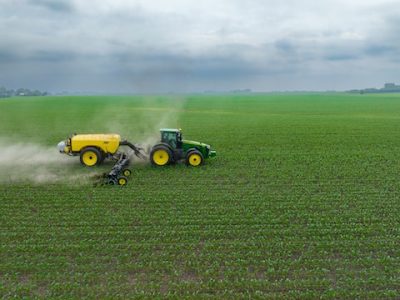
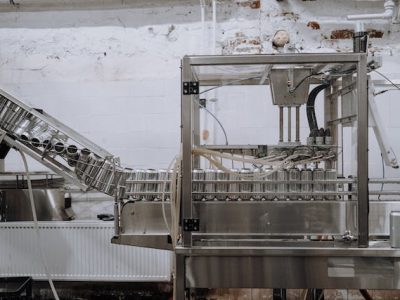
Food & Beverage
In the manufacturing of food and beverages maintaining a clean and hygienic production environment is paramount to ensure product safety and quality. Dust and fume extraction systems play a crucial role in this process, addressing potential hazards associated with airborne particles and contaminants. According to the Australian Standard AS/NZS 1678.2:2018 on “Food Safety Practices and General Requirements,” adequate ventilation and extraction systems are essential in food processing areas to prevent cross-contamination and protect against airborne contaminants.
Dust extraction is vital to eliminate particulate matter that can compromise the cleanliness of surfaces and machinery, leading to potential microbial growth and product contamination. Fume extraction is equally important in scenarios where cooking, baking or other heat-related processes generate airborne pollutants. The Australian Institute of Occupational Hygienists emphasizes the significance of controlling exposure to hazardous substances, endorsing the implementation of effective extraction systems in industrial settings.
Micronair has several solutions to assist with compliance with the Australian Standard AS 1668.2:2012, which addresses ventilation and air conditioning requirements for health and amenity, reinforces the necessity of dust and fume extraction in food and beverage manufacturing facilities. By adhering to these standards, manufacturers not only ensure regulatory compliance but also prioritize the health and safety of both consumers and workers.
Packaging
Incorporating dust and fume extraction systems into the manufacturing process is imperative to ensure both worker safety and product quality. Australian standards emphasize the importance of maintaining a clean and healthy working environment, particularly in industries prone to the generation of dust and fumes. According to the Australian Work Health and Safety Act 2011, employers are obligated to provide a safe workplace, including effective measures to control airborne contaminants.
Dust and fumes arising from packaging materials or manufacturing processes can pose significant health risks, such as respiratory issues and skin irritation. The Australian Institute of Occupational Hygienists recommends adherence to standards such as AS/NZS 1715:2009 and AS/NZS 1716:2012, which outline requirements for respiratory protection and respiratory protective devices. Implementing dust and fume extraction systems aligns with these standards, mitigating health hazards and promoting compliance with regulatory frameworks.
The Clean Air Society of Australia and New Zealand emphasizes the role of effective extraction systems in minimizing air pollution within industrial settings. Micronair has several options available to support in such extraction technologies that not only safeguards the well-being of workers but also enhances overall operational efficiency and product quality, aligning with the broader goals of sustainable and responsible manufacturing practices.
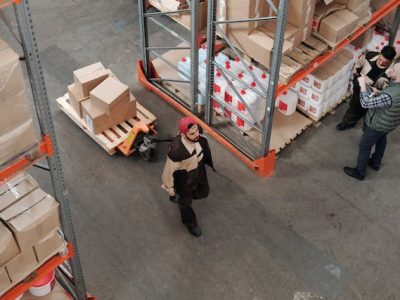
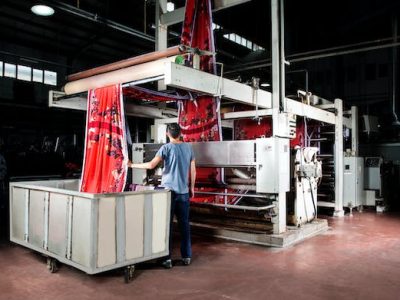
Paper & Textiles
Dust and fume extraction play a crucial role in the manufacturing of paper and textiles to ensure a safe and efficient working environment. Australia has stringent regulations and standards emphasize the importance of controlling airborne particles to safeguard workers’ health and maintain the quality of the final products.
According to the Australian Work Health and Safety Act 2011 employers are obligated to provide a safe workplace, which includes managing risks associated with dust and fumes. The Australian Standard AS/NZS 1715:2009 outlines the requirements for respiratory protective devices, emphasizing the need for appropriate protection against airborne contaminants during manufacturing processes.
In the paper industry, wood dust generated from processing raw materials poses respiratory hazards. The Australian Paper and Pulp Industry Standard AS 1334-1994 provides guidelines for controlling dust emissions. Similarly in the textile industry, with its use of fibres, dyes and chemicals that produce airborne particles that can be harmful. The Australian Textile, Clothing, Footwear, and Allied Industries Award 2020 incorporates measures to address workplace safety, emphasizing the importance of dust and fume extraction systems.
Manufacturers working with Micronair can mitigate health risks for workers, improve overall air quality and ensure compliance with regulatory requirements, ultimately fostering a safer and more productive manufacturing environment.
Pharmaceutical
In the pharmaceutical manufacturing industry, maintaining stringent hygiene standards is crucial to ensure the safety and efficacy of pharmaceutical products. Dust and fume extraction systems play a pivotal role in this process by eliminating airborne contaminants that can compromise product quality and pose potential health risks. According to the Australian Therapeutic Goods Administration (TGA), pharmaceutical manufacturers must adhere to the Good Manufacturing Practice (GMP) guidelines, which emphasize the importance of maintaining clean and controlled environments.
Micronair’s dust and fume extraction systems help meet these GMP standards by efficiently removing particles and fumes generated during the manufacturing process. Airborne contaminants, such as dust and powders, can contaminate pharmaceutical formulations and compromise the sterility of the production environment. The TGA’s Code of Good Manufacturing Practice for Medicinal Products highlights the necessity of implementing adequate control measures to prevent cross-contamination and ensure product integrity.
Additionally the Australian Standard AS/NZS 2243.8:2014 provides specific guidelines for the design, installation and operation of ventilation and air-handling systems in healthcare facilities, including pharmaceutical manufacturing facilities. Micronair helps adhering to these standards ensures that pharmaceutical manufacturers create environments that minimize the risk of airborne contamination, promoting product quality and patient safety. Integrating high quality dust and fume extraction systems is imperative to uphold Australia’s regulatory standards and guarantee the production of safe and effective pharmaceuticals.
